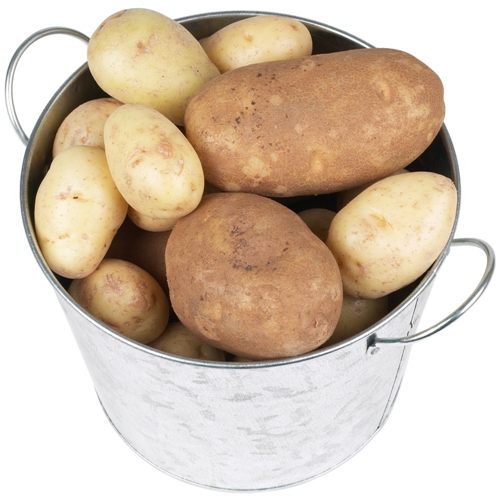
Potatoes are really easy to grow, but unlike most other vegetables you don’t start with seeds or a starter plant. Instead, you start with a potato!
Most garden centers and farm stores sell seed potatoes which are nothing more than potatoes that have already started to sprout. These sprouts are known as eyes.
If your seed potatoes have more than one eye (sprout) you can cut the potato into pieces with one or two eyes per piece. Cut them apart at least one day prior to planting. This allows the potato to dry which reduces the chance of disease or insect damage when you do plant them.
Plant your seed potatoes two to three inches deep in good rich soil. Your rows of potatoes should be 3 feet apart, and the plants in the row about one foot apart. Some people claim that if you toss a handful of pine needles into the hole with each seed potato that will prevent scab which is a blemish on the finished potatoes.
Don’t start planting until the soil warms a bit. It takes warm soil for the potatoes to start growing and if the seed potatoes sit in the cold, damp ground for too long before they grow they could rot. Once planted you should see new potatoes plants in three weeks for sure.
Once your potato plants are about a foot tall take your garden hoe and pull about 6″ of soil up around the plants. This is known as “hilling your potatoes” and it ensures that the new potatoes growing under ground are not exposed to any sunlight which makes for a much tastier potato.
The potato plants will produce a bloom; once the plants have bloomed you can start sneaking a few potatoes for dinner. Once the tops have died back in the fall it’s time to start digging and harvesting all of your potatoes. Just dig around the plants with a pitch fork, loosen the soil and sift through it with your fingers to find your plentiful crop of potatoes.
Allow the potatoes to dry out the direct sunlight, then once they are dry store them in a cool dry place and enjoy!
Mike McGroarty is the owner of McGroarty Enterprises and the author of several books. You can visit his website at Freeplants.com and read his blog at Mikesbackyardnursery.com.
Related Articles & Free Email Newsletter
Five Ways to Make Help Nature Make Topsoil
Growing Healthy, Productive and Profitable Plants through Succession Planting




Comment here